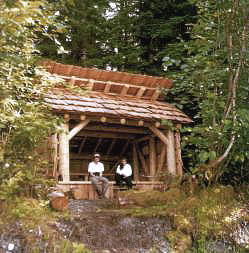Bay of Pillars facts for kids
Bay of Pillars is a large bay located in the beautiful U.S. state of Alaska. It's part of the Alexander Archipelago, a group of islands in southeastern Alaska. This bay is found within the Tongass National Forest, which is a huge protected area, and specifically within the Kuiu Wilderness. It's a wild and natural place!
Contents
About Bay of Pillars
Where is it?
Bay of Pillars is on the western side of Kuiu Island. It opens up into a larger body of water called Chatham Strait. Two points of land, Point Sullivan to the north and Point Ellis to the south, mark its entrance.
This bay is quite large, but it has many islands and hidden reefs. It also has two long sections, like arms, that stretch inland. These are called North Bay of Pillars and South Bay of Pillars.
Exploring the Bay
North Bay of Pillars
The North Bay of Pillars also has many small islands and reefs near its entrance. However, the very end of this bay is clear and wide, about 1.25 miles long and 1 mile wide. This clear area forms a good spot for boats to anchor safely. At the far northern end of the bay, two large streams flow into it, surrounded by wide, flat areas that are covered by water at high tide.
South Bay of Pillars
The South Bay of Pillars is mostly straight and clear for about 5 miles. After that, it becomes filled with many islands and reefs. In the southeastern corner, there's a small arm that goes eastward for about 1 mile. A small stream flows into this arm.
On the northern side, the South Bay ends at a narrow passage called the Narrows, or Skookum Chuck. This passage is about 0.75 miles long and 300 feet wide. The water here can flow very fast when the tides are strong!
The Narrows connect to an inner bay, which is about 3 miles long and 0.75 miles wide. At its eastern end, another arm extends southward for about 1 mile. A stream called Point Ellis Stream (also known as Kutlakoo) flows into this arm. This stream comes from a lake and flows over a gravelly bottom between wooded banks. The current isn't very strong because the lake is only a little bit higher than the ocean.


